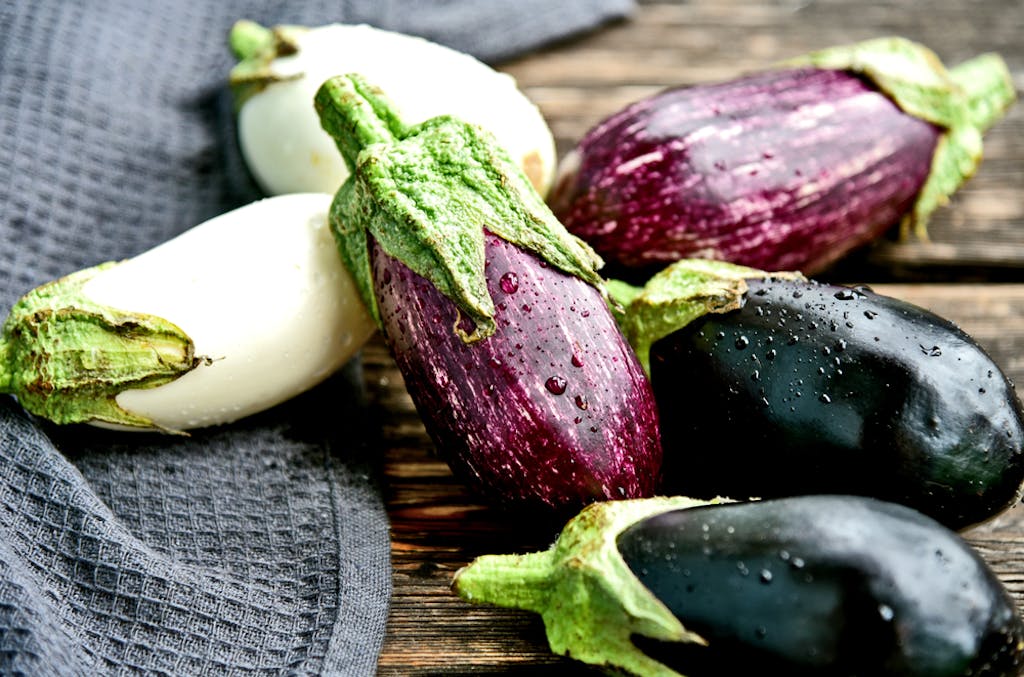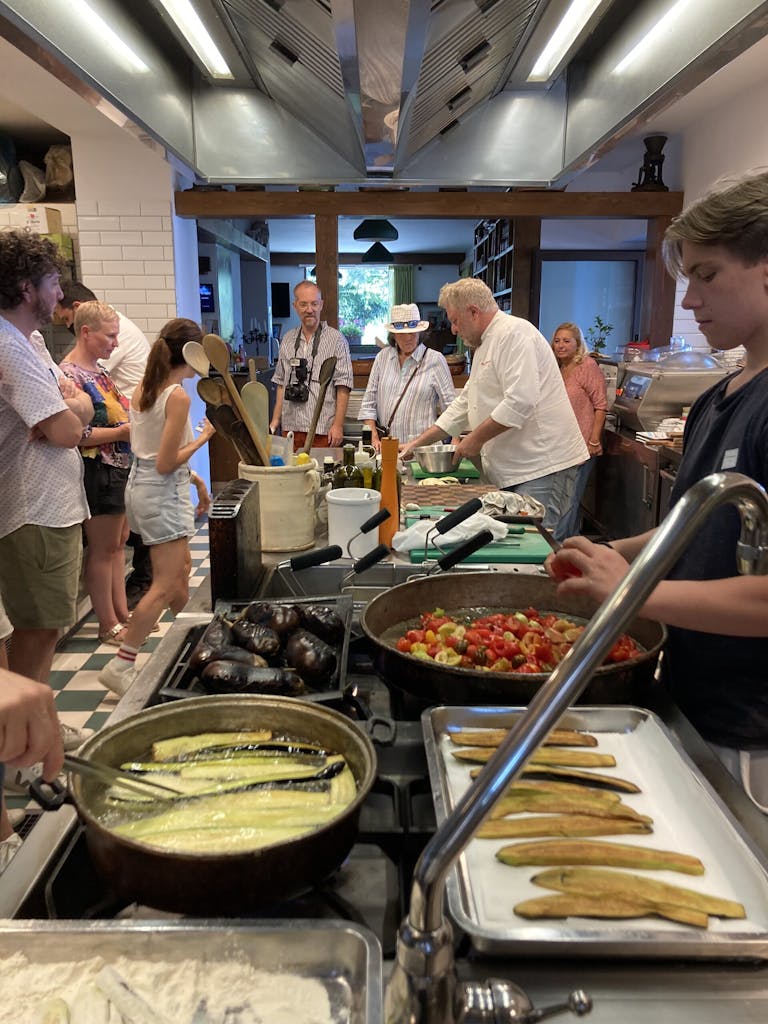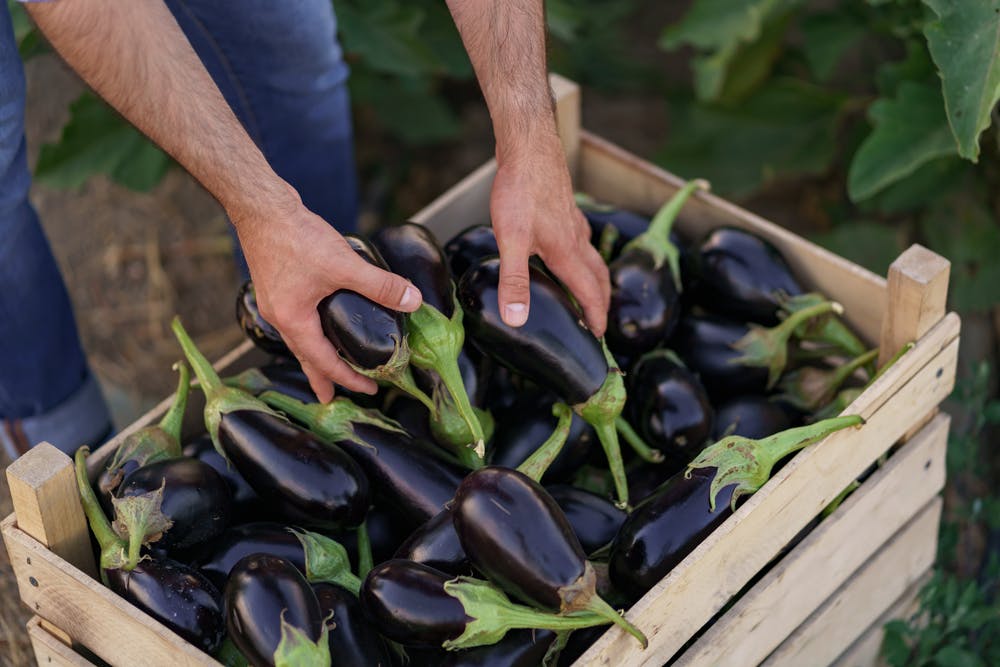S.A.L.T. Lab Lessons: Learning Recipes and Exploring Things to Do in Sorrento
In this series of stories, we share some of the most popular recipes taught at S.A.L.T. Lab, all inspired by our experiences in the Mediterranean. We hope you’ll join us, both on board and off.
Picture this: you’re sitting at a mile-long table under a beautiful pergola with the sun filtering through the leaves, a pattern of dancing shadows on the immaculate tablecloth. A gentle breeze is blowing. You know you have chosen one of the more unique things to do in Sorrento. From the terraced plots down below, you hear the gardeners call out to each other as they pick massive squash, eggplants and tomatoes. Meanwhile, the kitchen is abuzz behind you, the smell of fried dough and fresh passata tickling your nostrils. You look out at the Gulf of Naples, crisscrossed by boats, with the familiar silhouette of Mount Vesuvius in the distance as a dapper gentleman who could easily pass for a Stanley Tucci type is mixing limoncello (in house-made, of course) spritzes.

Learn with a “pasta whisperer” in Sorrento
This movie-perfect setting is part of the charm of this S.A.L.T. Experience we have designed for Sorrento, at Villa Rosa, chef Peppe Guida‘s agriturismo (his one Michelin star restaurant, Osteria Nonna Rosa, is a short drive away.) It is there we take our guests to pick vegetables in the surrounding acres of terraced gardens, and later, here we cook with the “pasta whisperer” himself. Guida is famous for his spaghettino cooked in lemon water (which he obtains from overnight maceration of organic Sorrento lemon peel) and finished with provolone del Monaco, a prized cheese produced near Sorrento.
A movie-perfect setting is part of the charm of this S.A.L.T. Experience we have designed for Sorrento, at Villa Rosa, chef Peppe Guida’s agriturismo.
If they’re lucky, guests visiting can catch a glimpse of Guida’s mother Rosa making jars of eggplant preserved in extra virgin olive oil; there are hundreds of different preserves, pickles, jams and sauces for sale at the restaurant, all made in house, all delicious. There are also books, as chef Guida has published a few: he loves teaching his recipes (and he’s very good at it, as our guests can testify) which often impart a smart spin on traditional dishes, revisiting them in a lighter or simply easier key, more fun and sustainable. Visiting this special place is one of the most unique things to do in Sorrento.
One example is his recipe for Polpette di parmigiana di melanzane that we teach at Silversea’s S.A.L.T. Lab, the on-board kitchen-laboratory hosting our destination-inspired cooking sessions. It’s easy to see why this recipe has quickly become a crowd pleaser. First of all, who doesn’t love polpette? Italians certainly do. In the North we make them with leftover bollito di carne, or with ground chuck, prosciutto, eggs, Parmesan cheese and nutmeg. In the Center-South, where vegetables are the stars of the table, they’re made with all the greens you can think of.
For his polpette, chef Guida has ripped a page from the book of tradition, starting with a light take on one of our most iconic dishes, Parmigiana di melanzane. Now the origins of this specialty are much debated. It is considered to be an official specialty of the regions of Campania (where Sorrento and Naples are), Calabria and Sicily, but according to some sources, a primitive version was created in Sicily centuries ago and only later made its way to Naples, where it became a favorite on the menus of the 18th century aristocracy.

All eggplants are not the same
In the beginning eggplants were fried in suet — frying in suet or butter (a more expensive alternative not all could afford) used to be the norm for frying in Italy; olive oil became common only later, and mainly in the South. At the core of this dish is, of course, the eggplant, which is also the star of another S.A.L.T. Lab class, on Pasta alla Norma. As much as Italians like to claim it as their own, eggplant actually came from abroad, brought by the Arabs in the 15th century. Many other Italian staples have traveled from afar: the tomato, for instance arrived in Italy in the 17th century thanks to the conquistadores who imported it from South America.
Not all eggplants are the same. In Italy there are at least seven different kinds you can find on stalls at farmers’ markets: the classic and most common one is the big Ovale Nera, dark purple, almost black, and oval; there are skinny ones, which are almost pink, with white marbelization (they’re called Zebrinas — the name is quite self-explanatory); there are all-white ones and light purple ones, super thin and long, called Perlina. For traditional parmigiana, recipes call for the Ovale Nera or the Tonda Lilla. They’re preferred for the quality of their pulp, which is firm and won’t get soggy when fried.
When making traditional parmigiana, you should always remember the “salt trick.” After you’ve sliced your eggplant, cover the slices with salt and let them rest for at least an hour, possibly pressing down on them with a weight of some sorts (a heavy pan will do). Before frying them, rinse them well and pat them dry. The salt trick is used to drain the eggplant of its excess water, which would make the parmigiana soggy, pooling at the bottom of the baking dish.

In the case of these polpette however, you won’t be frying. It’s one of the things our guests love the most in this recipe, the reason why so many keep making at home after trying it at S.A.L.T. Lab. The original Parmigiana is a decadent, gooey masterpiece, with its baked golden cheesy crust, but these polpette deliver extra freshness and lightness, while retaining all the flavors of the original dish. Something you’ll be able to indulge in more often than actual parmigiana. Pro tip: if you use freshly made mozzarella make sure you drain all the excess liquid as you don’t want your meatballs to be soggy. And don’t skip step six as it too will help your eggplant balls firm up and cook better. Enjoy!
If this recipe inspires you, we have plenty of S.A.L.T. experiences to try. Ready to learn more? Find one perfect for you here.

Polpette di Parmigiana di Melanzane
INGREDIENTS / Serves 4
18 oz or 500g eggplant
2 garlic cloves, minced
1 sprig of marjoram
7 oz or 200g mozzarella fior di latte
21 oz or 600g dry bread, soaked and squeezed
2 eggs
2 oz or 50g parmesan cheese, grated
Flour, as needed
26 oz or 750ml tomato purée
A few basil leaves
Salt, to taste
Extra virgin olive oil, to taste
PREPARATION
- Peel the eggplants and cut them into small pieces.
- Sauté the eggplant with olive oil, a garlic clove and a sprig of marjoram, let it cook until the eggplants soften. Once cooked place the eggplants on a plate lined with paper towels to dry them a little.
- Cut the mozzarella into cubes.
- In a bowl combine the bread, the Parmesan cheese, 2 eggs, the eggplants and season with salt.
- Mix well and form the meatballs. In the center of each meatball put a mozzarella cube.
- Put the meatballs in the fridge for 15/20 minutes (it helps the mixture to thicken a little).
- Place the flour in a place and roll the meatballs in the flour.
- Heat a little more oil in the pan and brown the meatballs on each side.
- Add the tomato purée, garlic, basil, a pinch of salt and a drizzle of oil. It should only cook for a few minutes, to keep the tomato tasting “fresh”.
